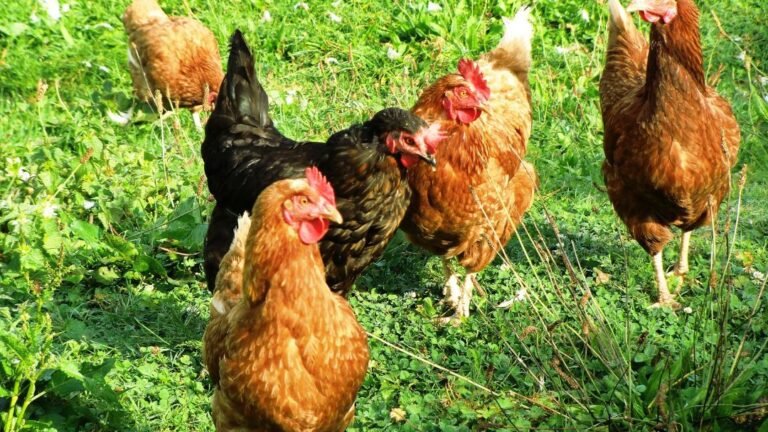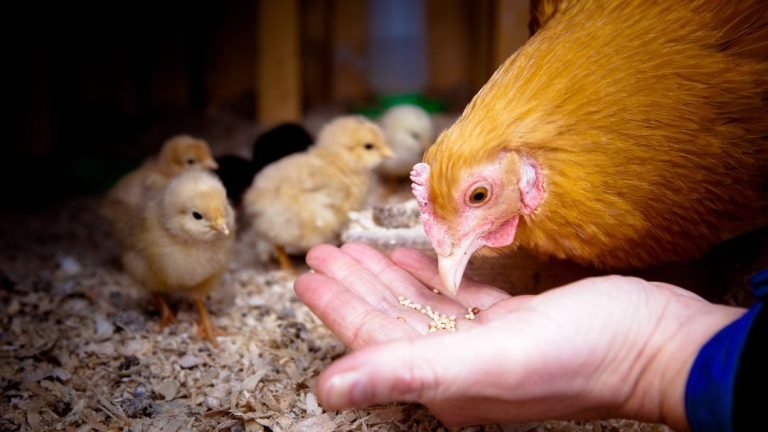Animals such as foxes, snakes, and birds prey on chickens, hunting them as a natural food source. Chickens are often targeted by a variety of animals, including foxes, snakes, and birds.
These animals view chickens as a source of food and hunt them accordingly. While chickens are typically kept in a protected environment like a coop or pen, predators can still find a way to access them. Whether it’s a fox digging under a fence, a snake slithering through a small opening, or a bird swooping down from the sky, these animals pose a constant threat to chickens.
Understanding the natural predators of chickens is crucial for their safety and helps farmers and chicken owners take necessary precautions to keep their flock secure.

Why Do Animals Eat Chickens?
Some animals, such as foxes, coyotes, and hawks, eat chickens as part of their natural diet. These predators prey on chickens because they are easy to catch and provide a good source of protein. It is important for chicken owners to take measures to protect their chickens from these predators.
Various Reasons Why Animals Prey On Chickens:
Carnivorous Instincts:
- Animals possess natural carnivorous instincts that drive them to seek out and consume meat.
- This innate behavior is deeply ingrained within their biological makeup.
- Carnivorous animals rely on a diet consisting of other animals for their survival and energy needs.
Explanation of carnivorous nature in animals:
- Carnivorous animals possess sharp teeth and strong jaws designed for tearing and consuming flesh.
- Their digestive systems are adapted to efficiently process animal protein.
- This predatory behavior is crucial for their survival and maintaining a balanced ecosystem.
How it relates to their diet:
- Animals that prey on chickens do so because they view them as a source of food.
- Chickens provide a valuable source of meat, protein, and nutrients for these predators.
- The carnivorous nature of these animals dictates their dietary preferences, and chickens fit into their natural prey selection.
Lack of Defenses:
- Chickens are generally vulnerable to predation due to their lack of natural defenses.
- Their small size and relatively weak physical strength make them easy targets for larger predators.
- Unlike some other animals, chickens lack protective features such as sharp teeth, claws, or venom.
Discussion on why chickens are vulnerable:
- Chickens have been selectively bred over centuries for human purposes, leading to potential weaknesses in their natural defenses.
- Domesticated chickens often prioritize traits such as docility, rapid growth, and egg-laying capacity over self-preservation abilities.
- This vulnerability makes them attractive prey for animals seeking an accessible source of food.
Factors that contribute to their lack of defenses:
- Chickens have limited mobility and flight capabilities, making it challenging for them to escape from predators quickly.
- The absence of protective adaptations, such as camouflage or defensive behaviors, further increases their vulnerability.
- Their social nature and tendency to gather closely in flocks can make them a tempting target for predators seeking a larger meal.
Abundance and Availability:
- The abundance of chickens, particularly domesticated breeds, makes them an attractive food source for various animals.
- Human farming practices have resulted in a significant population of chickens that is easily accessible to predators.
- Concentrated farming areas, backyard coops, and free-ranging chickens increase the prevalence of chickens within the natural environment.
How the abundance of chickens attracts animals:
- The presence of a large population of chickens provides a consistent and readily available food source for animals in their natural habitats.
- Animals instinctively recognize the abundance of potential prey and take advantage of the convenience and energy efficiency it offers.
- This attraction to an abundant food supply contributes to the increased prevalence of animals preying on chickens.
Why chickens are easily accessible prey:
- Chickens, often kept in enclosed spaces or within easily penetrable enclosures, offer minimal obstacles for predators.
- Their proximity to human habitation makes it easier for predators to access them without encountering significant barriers.
- The relatively predictable routines and behavior of chickens further aid predators in targeting and capturing their prey.
Remember to follow AI writing best practices, keeping the content engaging, concise, and focused on the subheading.
Animals That Eat Chickens
Animals that prey on chickens include foxes, wolves, eagles, snakes, and raccoons. These predators target chickens for their meat and eggs, posing a threat to backyard flocks and agricultural operations. Protecting chickens from these natural predators is essential to ensure their safety.
1. Fox

Foxes belong to the Canidae family and are highly adaptable and cunning carnivores. They are known for their slender bodies, bushy tails, and keen hunting instincts.
There are numerous fox species worldwide, including the red fox, gray fox, Arctic fox, and more. Each species varies in size, coloration, and habitat preferences.
Targets: Foxes typically go after chickens of all ages but prefer smaller, more vulnerable chicks.
Key Signs of Attack: Multiple missing chickens, often with signs of a clean kill (head or neck injuries).
Protection: Use secure chicken coops with hardware cloth and consider electric fencing or motion-activated lights to deter foxes
2. Coyote
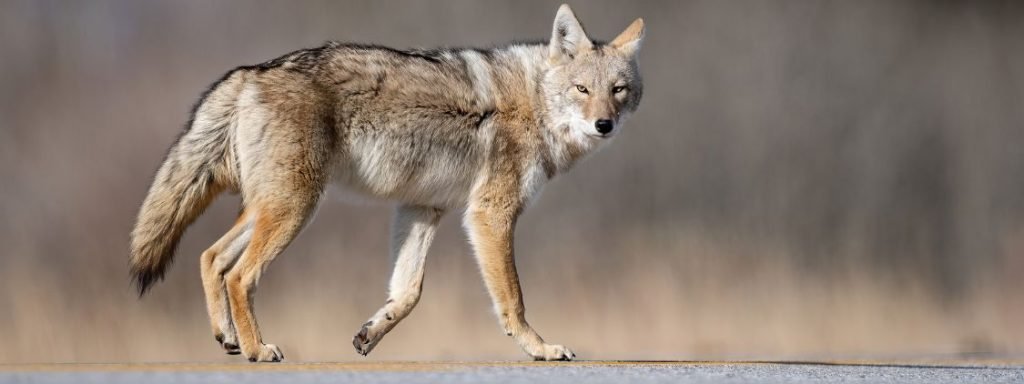
Coyotes are canines native to North and Central America. They are highly adaptable, and intelligent, and often hunt alone or in pairs.
While the Western coyote is the most widespread, there are different subspecies and color variations across their range.
Target Age: Coyotes will prey on chickens of all ages, particularly during the night.
Key Signs of Attack: Mauled or missing chickens, often with evidence of digging under coop fencing.
Protection: Fortify coops with underground barriers, install motion-activated lights, and use guardian dogs or llamas as deterrents.
3. Raccoon

Raccoons are omnivorous mammals known for their dexterity and curiosity. They have distinctive facial masks and ringed tails.
There is one primary species of raccoon, the common raccoon (Procyon lotor), but they exhibit regional variations in size and color.
Target Age: Raccoons prefer adult chickens but will also target eggs and chicks.
Key Signs of Attack: Missing chickens with signs of forced entry into the coop, such as damaged latches or locks.
Protection: Secure coops with sturdy locks, use automatic door closers, and install electric fencing around the coop.
4. Bobcat

Bobcats are North American wild cats known for their stealth and agility. They are solitary hunters and are crepuscular, active at dawn and dusk.
There is a single bobcat species (Lynx rufus) found in North America, but regional subspecies and variations exist.
Target Age: Bobcats primarily prey on smaller chickens, chicks, and bantams.
Key Signs of Attack: Missing or half-eaten chickens, often with signs of a precise kill (puncture wounds to the neck).
Protection: Ensure your coop has strong wire mesh, and consider motion-activated lights or alarms.
5. Weasel
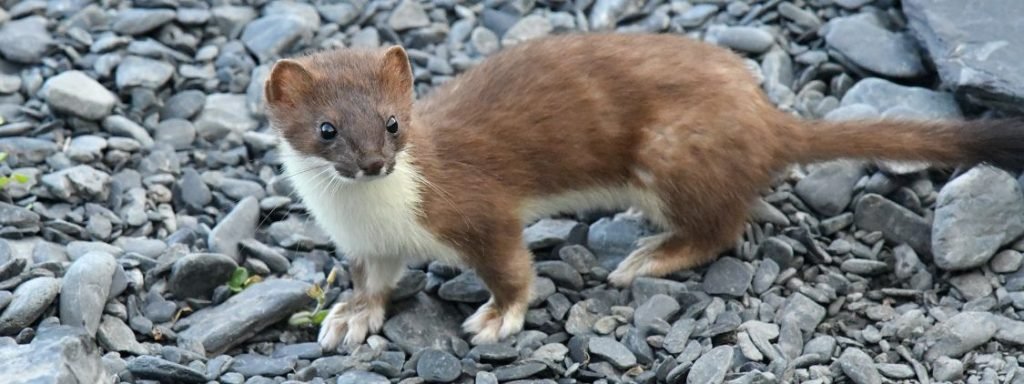
Weasels are small, carnivorous mammals known for their long, slender bodies and hunting skills. They are active year-round.
Various weasel species exist worldwide, including the least weasel, stoat, and long-tailed weasel, each with slight differences in size and coloration.
Target Age: Weasels target chicks, often killing multiple in one attack.
Key Signs of Attack: Missing chicks, often with signs of a small, precise bite on the neck.
Protection: Use 1/2-inch hardware cloth instead of chicken wire to prevent entry, and secure openings with tight-fitting latches.
6. Hawk
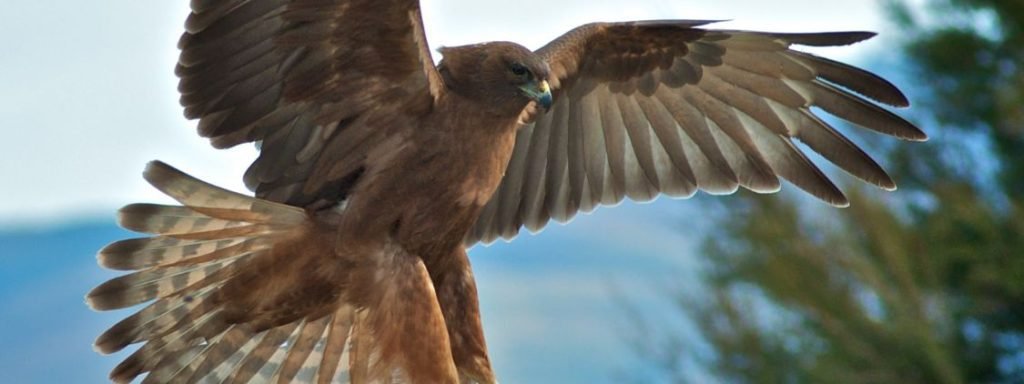
Hawks are birds of prey (raptors) known for their sharp talons and keen eyesight. They are typically diurnal (active during the day) and have a strong hunting instinct. Hawks are skilled aerial hunters, often soaring at great heights and swooping down to catch their prey.
There are numerous species of hawks found worldwide, each with unique characteristics. Common species include the red-tailed hawk, Cooper’s hawk, and sharp-shinned hawk. They vary in size, wing shape, and hunting behaviors.
Target Age: They primarily go after free-ranging adult chickens and smaller birds, such as chicks.
Key Signs of Attack: Missing chickens with evidence of talon marks or feathers scattered.
Protection: Provide overhead cover or netting in the chicken run to deter aerial attacks.
7. Owl

Owls are nocturnal birds of prey known for their exceptional night vision and nearly silent flight. They have large eyes adapted for low light conditions and are typically solitary hunters. Owls are highly skilled at catching small mammals and birds in the dark.
Owls encompass a diverse group of species, including the barn owl, great horned owl, and snowy owl. Each owl species exhibits distinct size, plumage patterns, and habitat preferences. They are renowned for their haunting hoots and calls during the night.
Target Age: Eagles typically target free-ranging chickens, especially bantams and smaller breeds.
Key Signs of Attack: Missing chickens with evidence of powerful talon marks.
Protection: Keep chickens confined to a secure run with overhead netting.
8. Snake

Snakes are reptiles with elongated bodies and no limbs. Some snake species are constrictors, while others are venomous.
Various snake species may prey on chickens, including rat snakes, racers, and bullsnakes, which vary in size and coloration.
Target Age: They primarily target eggs and chicks, though larger snakes can eat adult chickens.
Key Signs of Attack: Eggs disappearing or chicks vanishing from the coop.
Protection: Seal coop openings, elevate nesting boxes, and remove hiding spots near the coop.
9. Skunk
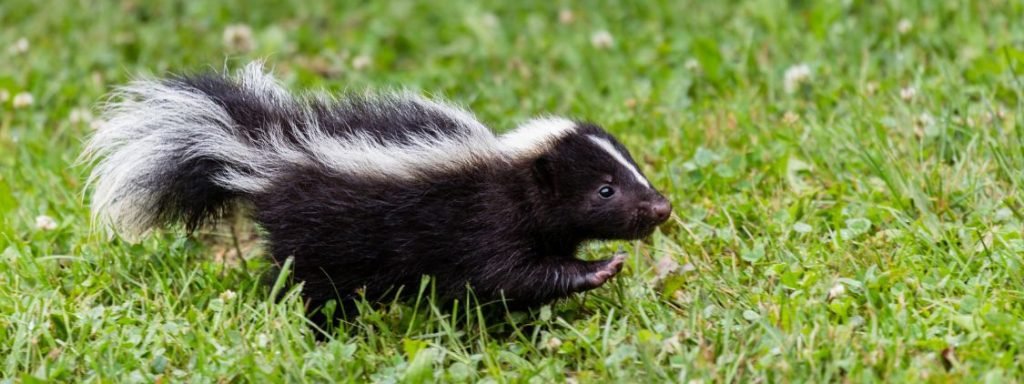
Skunks are omnivorous mammals known for their distinctive black-and-white coloration and ability to spray a foul-smelling liquid for defense.
Different skunk species exist, such as the striped skunk and spotted skunk, with variations in size and color patterns.
Target Age: Skunks target eggs and chicks, as well as sleeping adult chickens.
Key Signs of Attack: Missing eggs and chickens with signs of a bite to the neck.
Protection: Secure the coop with sturdy locks and consider motion-activated lights or alarms.
10. Opossum

Opossums are marsupials known for their prehensile tails and adaptability. They have a somewhat slow, deliberate gait.
The Virginia opossum is the only opossum species in the United States and is the most common. They vary slightly in size and coloration.
Target Age: Opossums may target eggs and chicks but are less likely to take on adult chickens.
Key Signs of Attack: Missing eggs and chicks with evidence of scavenging.
Protection: Seal any openings in the coop, and secure food containers.
11. Domestic Dog

Domestic dogs, also known as Canis lupus familiaris, are highly variable in size, temperament, and behavior. They are descendants of wolves and exhibit a wide range of instincts, including hunting and playfulness.
There are hundreds of different dog breeds, each with its own characteristics and tendencies. While many dogs are gentle and can coexist with chickens, others may have a strong prey drive that makes them a threat to poultry.
Target Age: Dogs may attack chickens of all ages, often with a playful or hunting instinct.
Key Signs of Attack: Obvious signs of mauling or killing with injuries to feathers and body.
Protection: Properly train and supervise dogs around chickens, and use fencing to separate them when necessary.
12. Domestic Cat

Domestic cats, or Felis catus, are small carnivorous mammals known for their agility, stealth, and hunting instincts. Cats are solitary predators and often enjoy stalking and pouncing on prey.
Domestic cats come in various breeds, each with its own characteristics. While some breeds are more active hunters than others, nearly all cats have a natural instinct to chase and catch small moving objects, such as chicks.
Target Age: Cats usually target small chicks, particularly if they move quickly.
Key Signs of Attack: Missing chicks with signs of a bite to the neck.
Protection: Supervise cats around chickens and use barriers to keep them apart.
13. Ferret
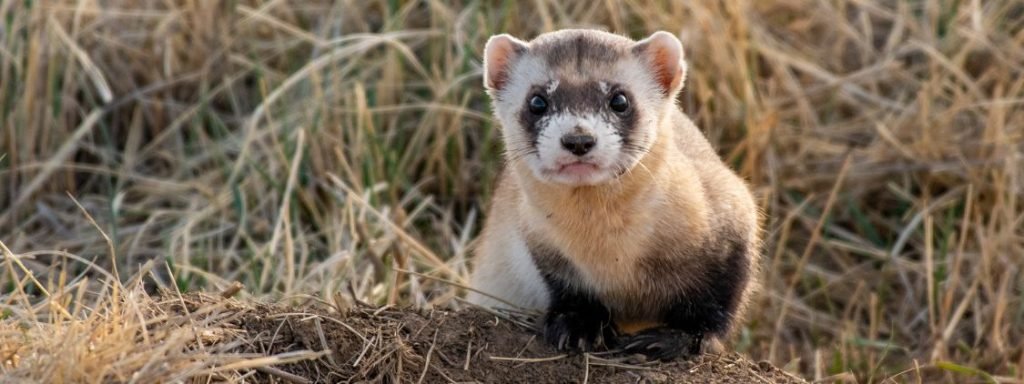
Ferrets, or Mustela putorius furo, are domesticated relatives of the European polecat. They are carnivorous and have a strong predatory drive.
Ferrets are typically similar in size and appearance, with long, slender bodies, short legs, and a playful disposition. They may vary slightly in coat color and pattern.
Target Age: Ferrets may target chicks and smaller bantam breeds.
Key Signs of Attack: Missing chicks with signs of biting or neck injuries.
Protection: Ensure secure coop and run enclosures to prevent ferret access.
14. Fisher
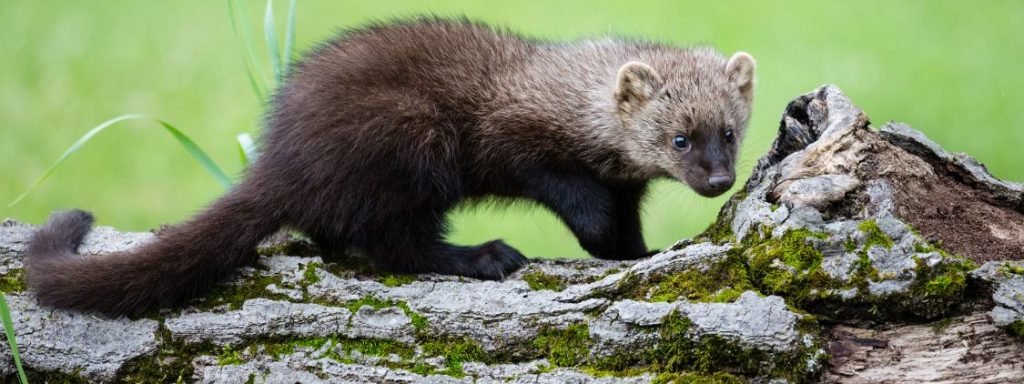
Fishers, or Pekania pennanti, are members of the weasel family and are known for their agility, strength, and hunting skills. They are primarily solitary and crepuscular (active during dawn and dusk).
Fishers are relatively uniform in appearance, with dark brown fur, a bushy tail, and sharp retractable claws. They are about the size of a housecat, but more robust and agile.
Target Age: Fishers tend to go after adult chickens and may attack during the day.
Key Signs of Attack: Missing chickens with signs of bites to the neck or body.
Protection: Use strong, secure coop materials and consider electric fencing.
15. Mink
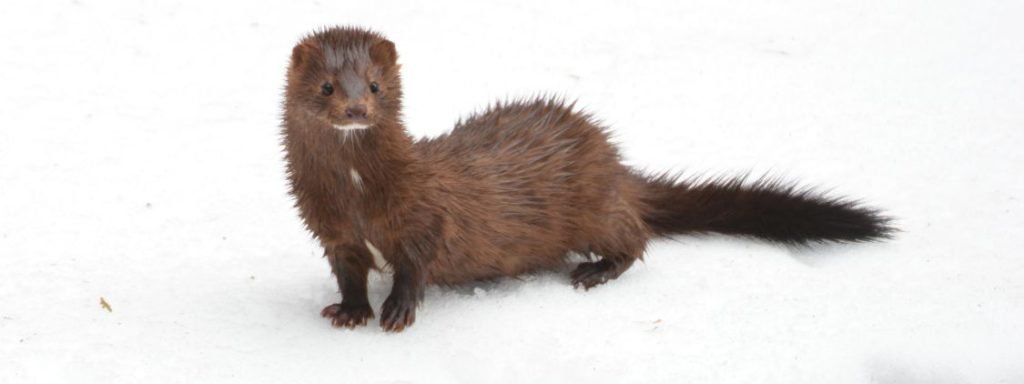
Minks, or Neovison vison, are semi-aquatic carnivores known for their swimming ability and hunting prowess. They have slender bodies and are highly adaptable.
Minks vary in color from dark brown to almost black and have a sleek, waterproof coat. They are small mammals, similar in size to ferrets.
Target Age: Minks target chicks, and smaller breeds, and may also raid nests for eggs.
Key Signs of Attack: Missing chicks with signs of bites or neck injuries.
Protection: Use hardware cloth for coop security and place traps near water sources if minks are nearby.
16. Ocelot
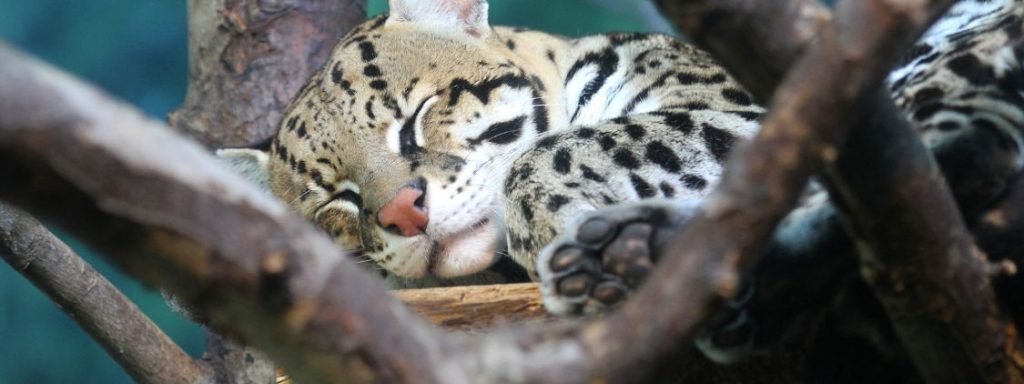
Ocelots, or Leopardus pardalis, are small wild cats native to the Americas. They are nocturnal and have a solitary hunting behavior.
Ocelots have a striking appearance with a tawny coat covered in black rosettes and stripes. They are about twice the size of a domestic cat and have a distinctive look with their large, expressive eyes.
Target Age: Ocelots may target adult chickens but often go after chicks.
Key Signs of Attack: Missing chickens with signs of bites or puncture wounds.
Protection: In regions where ocelots are present, ensure strong coop defenses and consider using guard animals.
17. Bear

Bears belong to the family Ursidae and are large, omnivorous mammals known for their strength, size, and hibernation behavior. They are often solitary animals.
There are several bear species, including black bears, grizzly bears, polar bears, and brown bears, each with distinct appearances and habitats. Brown and grizzly bears are particularly known for their powerful build and formidable presence.
Target Age: Bears pose a significant threat to all chicken ages, including adults.
Key Signs of Attack: Obvious signs of a break-in, extensive damage, or destruction of the coop or run.
Protection: In bear-prone areas, use bear-resistant containers for food storage and reinforce coop structures.
Strategies To Protect Chickens From Predators
Protecting chickens from predators is crucial to ensure their safety. Unfortunately, various animals such as foxes, raccoons, and hawks pose a threat to chickens. Implementing strategies like secure fencing, keeping chickens enclosed at night, and installing motion-activated lights can help deter predators and safeguard the flock.
Effective Ways To Safeguard Chickens From Predators:
Predator Deterrents:
- Install motion-activated lights: Predators are often deterred by sudden bursts of light, as they prefer to operate in the dark. Motion-activated lights can startle and scare them away.
- Use scare devices: Utilize scarecrows, reflective tape, or even hanging shiny objects like CDs to create a deterrent effect. These tactics make predators cautious and less likely to approach.
- Apply strong odors: Certain smells, such as predator urine or vinegar, can repel predators. Spraying these scents around the coop or utilizing predator-urine-based products can deter potential threats.
Secure Enclosures:
- Choose sturdy fencing: Opt for fencing or wire mesh with small openings to prevent predators from squeezing through. Reinforce vulnerable areas like corners and gates to make them more resistant to attacks.
- Dig predator-resistant barriers: Bury wire mesh or hardware cloth around the perimeter of the enclosure, extending it at least one foot below the ground surface. This prevents predators from burrowing their way in.
- Cover the chicken run: Use a secure overhead net or wire mesh to enclose the top of the chicken run. This prevents aerial predators like hawks and owls from swooping down and attacking.
Guardian Animals:
- Introduce guardian dogs: Breeds such as Great Pyrenees, Anatolian Shepherds, or Akbash dogs can serve as effective guardians. They are instinctively protective and can actively discourage predators from approaching the chickens.
- Consider llamas or alpacas: These gentle and protective animals can ward off predators due to their size and aggressive nature when defending their flock. They can also help alert you to potential threats.
- Implement poultry-friendly cats: Certain cat breeds excel at keeping predators at bay. They patrol the area around the coop and deter smaller predators like rats and snakes, providing an added layer of protection for your chickens.
Remember, by implementing these strategies to protect your chickens from predators, you can create a safer environment for your flock and reduce the risk of attacks. Take proactive measures to discourage predators, reinforce enclosures, and introduce guardian animals to ensure the well-being of your chickens.
Conclusion
It’s clear that chickens face a variety of predators in the animal kingdom. From mammals like foxes and raccoons to birds like hawks and owls, these predators prey on chickens for food. Snakes and rodents also pose a threat to chickens, often sneaking into their coops or stealing their eggs.
While humans have domesticated chickens and provided protection, it’s important to remain vigilant in safeguarding these fowl from potential harm. Implementing measures like secure fencing, predator-proof coops, and suitable lighting can help deter predators and keep chickens safe. Additionally, establishing a good relationship with your local wildlife management agency can provide valuable resources and support in dealing with predators.
By understanding the various animals that eat chickens, we can take necessary precautions to ensure the well-being and safety of these beloved farm animals.


